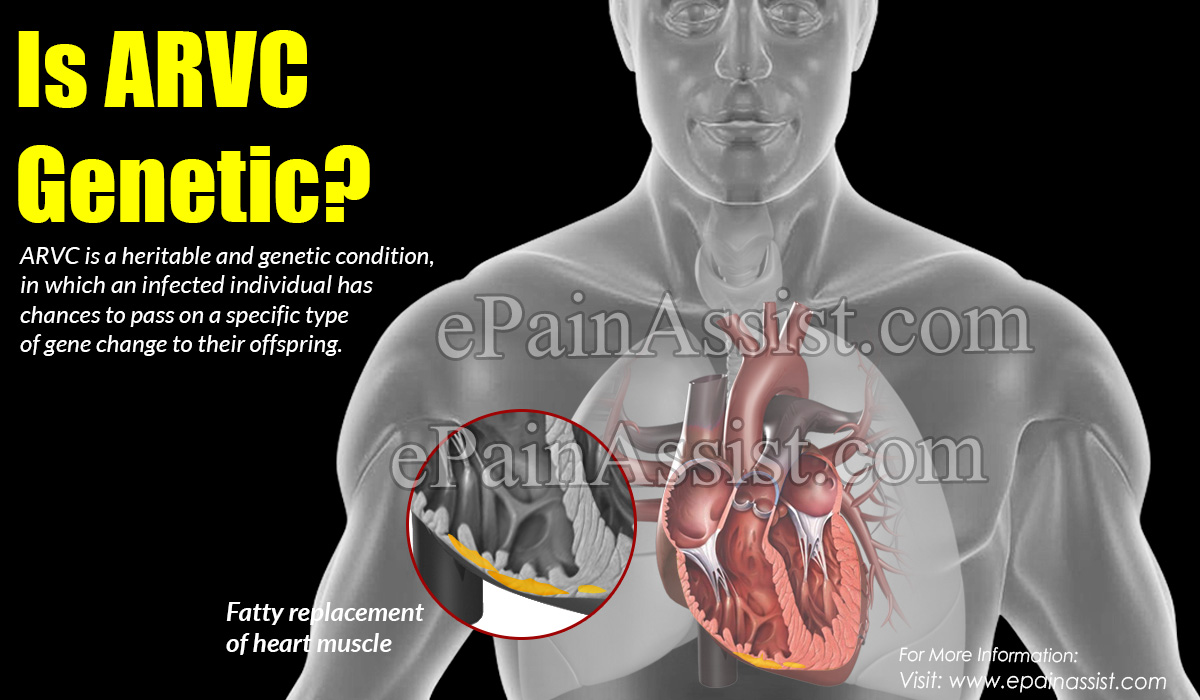ARVC is the acronym for the heart disease named arrhythmogenic right ventricular cardiomyopathy appears usually during the adulthood of a person. This is a myocardium disorder i.e. the muscular wall of a human heart and the condition results in breakdown of myocardium with time and thereby, increases the risk related to arrhythmia (abnormal heartbeat) and sudden death.

Is ARVC (Arrhythmogenic Right Ventricular Cardiomyopathy) Genetic?
ARVC and Genetic Mutations
ARVC is a heritable and genetic condition, in which an infected individual has chances to pass on a specific type of gene change to their offspring. ARVC takes place from mutations in about 13 different genres and majority of them categorize as desmosomal genes, as they provide the necessary instructions to create components essential for desmosomes cell structures.
Desmosomes mainly attach with cells of heart muscles to each other to provide adequate strength to myocardium and send signal among neighboring cells. Demosome acts as mechanical bridge to link different heart cells and it comes with a few major components named Plakoglobin, Plakophilin-2, Desmoplakin, Desmocollin-2 and Desmoglein-2.
Mutations in desmosomal genes cause impairment in various functions performed by desmosomes. Without normal desmosome, myocardium cells detach from each other leading to death of a person, especially, during the placement of heart muscles under a huge stress, like for instance at the time of doing vigorous exercise.
Such changes mainly affect one’s myocardium surrounding the heart’s right ventricle i.e. one from the two different lower heart chambers of a person. Scar and fat tissues gradually replace the damaged myocardium. With the formation of abnormal tissues, right ventricle’s walls stretch out and prevent any individual’s heart to pump blood in an effective way. These changes even disrupt electrical signals responsible to control one’s heartbeat leading to arrhythmia.
Other than this, mutations in various non-desmosomal genes (although the case is rare) may cause the problem of ARVC. These genes perform a wide range of functions, which include providing stability and structure to cells of one’s heart muscles, signaling cells and helping to maintain a regular heart rhythm.
Inheritance Patterns Observed in ARVC Patients
Until now, doctors and cardiologists have observed different patterns related to inheritance in ARVC patients, which include-
Autosomal Dominant Inheritance
In case of autosomal dominant inheritance, individuals with changing gene predisposing towards ARVC have about 50 percent chance to pass on the same type of predisposition into their children. Every individual inheriting a gene change related to ARVC will develop the problem and it indicates reduced penetrance. People suffering from ARVC in a family show variation in the disease’s severity and the age, at which the problem begins. Hence, doctors are working hard to identify the genetic and related factors predict which individuals with genetic variations often develop the problem of ARVC.
Autosomal Recessive Inheritance
In case of autosomal recessive inheritance, the patients have two different copies of a gene related to ARVC to suffer from the problem. Individuals have 25 percent chances related to inheriting both copies of the changes take place in the gene. Here, each parent carries a specific gene change but does not cause ARVC problem.
Compound Heterozygosity and Digenic Mutations
Understanding the inheritance patterns in families becomes further complicated when there occurs more than a single gene change. In some of the families, the person carrying ARVC diagnosis may highlight two different types of genetic changes within the same gene referred commonly as compound heterozygosity. On the other side, in case of other individuals ARVC leads to more gene changes referred commonly as digenic inheritance. In these types of situations, doctors fail to provide information related to specific risk to family members in case they inherit a single gene chance, as other ARVC patients also show the same type of gene changes.
Also Read:
- Cardiomyopathy – Causes, Symptoms, Diagnosis, Treatment
- How is Apical Ballooning Syndrome or Stress Cardiomyopathy Different from a Heart Attack?
- Causes & Symptoms of Arrhythmogenic Right Ventricular Cardiomyopathy or ARVC
- Arrhythmogenic Right Ventricular Cardiomyopathy or ARVC: Treatment, Prognosis, Coping, Complications
- Causes of Hypertrophic Cardiomyopathy & Its Treatment
- How Long Does A Person live After Being Diagnosed With Cardiomyopathy?
